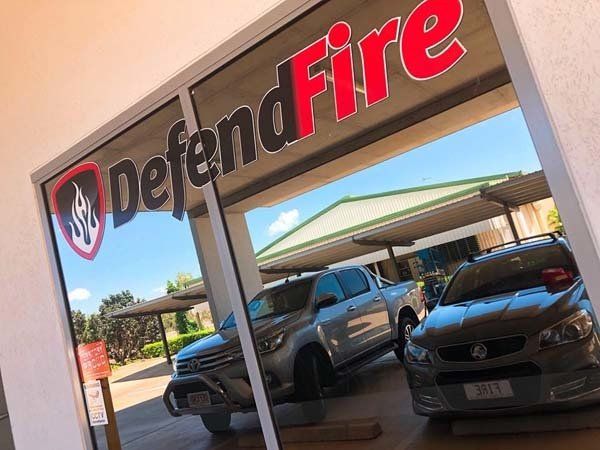FIRE HYDRANTS & SPRINKLER SYSTEMS
FIRE HYDRANT INSTALLATION SERVICES IN ADELAIDE
MAKING WATER FLOW WHEN AND WHERE IT'S NEEDED - AUSTRALIA WIDE
FIRE SPRINKLERS - THE MOST EFFECTIVE MEASURE
Fires are no joke. They can virtually happen at any time, in any place. The damage to life and property if we're not sufficiently prepared can be absolutely devastating. As such, it is imperative that you have all the standard safety and security tools and features in place at your place of business. Doing so protects you the business/building owner, your employees, and even your bottom-line. Fire sprinkler should be at the top of this list.
A fire sprinkler system works by being automatically activated by an increase in temperature at the sprinkler head. The small glass bulb contained within the sprinkler head is designed to shatter at a predetermined temperature and release a small plug. The plug is forced out by the water pressure behind it and water, in great quantities, flows....and it flows fast. The water, as it is released from the sprinkler head works to suppress the fire rapidly. The water spray pattern is a result of the deflector plate that the water hits as it passes out of the sprinkler orifice.
Fire sprinkler systems are effective due in large part to their simple design. The sprinkler system's water supply is fed from either pumps and tanks, or the town's main. The sprinkler's piping system is installed into the ceiling void of the building (the part between the ceiling and roof that is invisible to the naked eye while standing in the room) and the sprinkler head is "dropped" to ceiling level. Sprinkler also protect the ceiling void.
Fire sprinkler systems have been around for more than two centuries and have seen significant improvements over the years. It's true that early versions weren't very reliable and caused significant water damage. But today, sprinkler systems are credited with reducing deaths and loss of property by more than 85 percent. Since each sprinkler head is automatically triggered by fire-specific temperature, just one or two sprinklers can quickly extinguish and/or contain a fire to the room where it started and cause little property damage. And because sprinklers use about six times less water than a fire hose, they're actually less harmful to your property than a visit from the fire department.
QUICK FIRE SPRINKLER OVERVIEW
Sprinklers are customised to suit the building’s individual requirements. There are broadly four types, namely:
- Pre-action
- Dry pipe
- Wet pipe
- Deluge systems.
PRE-ACTION
Pre-action fire sprinkler systems are filled with air and water that passes through when the smoke alarm or detector goes off. The system requires two triggers to start water flow. These are particularly used where sprinklers are only necessary in the case of an actual fire to protect the contents.
DRY PIPE
Dry pipe sprinklers are similar to pre-action sprinklers in the sense that they use pressurised air before releasing water. They are ideal for buildings with low temperature to prevent the pipes from freezing.
WET PIPE
Wet pipe sprinklers mostly have water in them for quick release and are the most common form of sprinkler. They are used for high-rises or office buildings with multiple floors, warehouses, shopping centres, hospitals and more
DELUGE
Deluge systems also need a smoke / heat detector or manual activation—like the pre-action system. This system is particular for a building which houses flammable chemicals or heavy industrial buildings, such as power generation and oil and gas.
FIRE HYDRANTS - THE BRIGADE'S BEST FRIEND
Fire hydrants are the connection point for the fire brigade to access the site’s water supply. Either fed from the site's fire pumps or from the town's main water supply, fire hydrants provide the fire brigade with a reliable and steady supply of water to fight fires.
Fire hydrant systems include several different aspects:
- Pumps and Tanks - needed when water supply isn't sufficient to meet the site/building requirements.
- Hydrant Booster - The location where the fire brigade connects their fire appliance's pump into as so to "boost" the system pressure.
- Hydrant Block Plan - A very detailed plan of the entire hydrant system. This is a crucial element as it is needed by the fire brigade to inform them of valve locations, flow and pressure parameters and pump locations.
- Hydrant Valves/Landing Valves - The hydrant outlet that the brigade physically connects their hoses to in order to fight a fire.
- Stop/Isolation Valves - Valves located around the hydrant system that are needed to stop the water flow if needed. Normally used for maintenance and repairs and should ALWAYS be open at other times.

AUSTRALIAN STANDARDS
The Australian Standards prescribe when and how the sprinklers and hydrants should be inspected by our adequately trained and skilled technicians. All routine maintenance is carried out with strict adherence to Australian Standards AS1851.
Depending on your location, the frequency of maintenance can vary greatly. In the Northern Territory, the Building Fire Safety Regulations were amended to adopt the most recent version of AS1851.
In South Australia, the local government determines what version of AS1851 is to be adhered to. Weekly pump, tank and sprinkler inspections are very commonplace.
CUSTOMER SATISFACTION
Defend Fire is dedicated to customer satisfaction through commissioning the most effective and cost-efficient automatic fire sprinkler systems and hydrant systems. We ensure quality and proper design; meeting your specific fire and life safety requirements and ensuring compliance in line with Australian Standards AS2118 and AS2419.
Please contact us to discuss your specific site needs in relation to any hydraulic fire fighting equipment and system.
